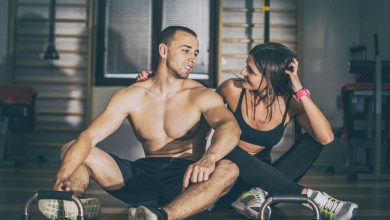The Art Of Yoga And Meditation

The history of Yoga began almost 5000 years ago, in 3000 B.C, when historians discovered stone-carved figures of different yoga postures in the Indus Valley, which depicted the original poses and practices.
Yoga and meditation are physical, mental, and spiritual practices that aim to attain a state of permanent peace of mind to experience one’s true self. The main philosophy of Yoga is that the mind, body, and spirit are all interconnected into one and cannot be separated.
It is believed that yoga was developed as a way to achieve harmony between the heart and soul on the path to divine enlightenment during that era. Throughout its practice, it was discovered that yoga has the practical benefit of improving one’s health, like decreasing one’s blood pressure and relieving physical injuries and other chronic pains.
Nowadays, Yoga and meditation have expanded around the globe as a type of exercise. Different classifications of Yoga and meditation are practiced that precisely align with your goals in terms of fitness and mental well-being.
Health Benefits of Yoga & Meditation
Yoga helps strengthen the core, makes the body flexible, and promotes healthy discipline, self-inquiry, mindfulness, and attentiveness. The practice of meditation through yoga encourages you to be conscious of yourself and choose to live a well-coordinated mind-body foundation. Using meditation timer is a very good way to meditate.
Your mind is always functioning, enhancing your focus; you learn to relax more, which reduces stress, provides easier sleep, boosts the immune system, promotes exercise, helps in weight loss, and improves muscles and joints flexibility and mobility.
In a study, they found that a short-term yoga-based lifestyle reduced the risk for cardiovascular disease as there was weight loss and a reduction of blood pressure in obese men.
There are 6 branches of yoga, and each has a different focus goal and characteristics:
- Hatha yoga: for honing the body and mind.
- Raja yoga: meditation yoga for discipline.
- Karma yoga: for freeing the mind of negativity and selfishness.
- Bhakti yoga: for establishing devotion and cultivating positive emotions.
- Jnana yoga: for intellectual development.
- Tantra yoga: for ceremony and ritual in a relationship.
There are also 9 types of meditation, namely:
- Mindfulness meditation: awareness and patterns in your thoughts
- Spiritual meditation: having a deeper understanding of the spiritual meaning
- Focused meditation: deep concentration in your senses
- Movement meditation: focus and more profound connection with your body
- Mantra meditation: focusing on repetitive sound to clear the mind.
- Transcendental meditation: designed to quiet the mind and create a state of calm and peace
- Progressive relaxation: to reduce tension in the body and promote relaxation.
- Loving-kindness meditation: to encourage compassion and kindness
- Visualization meditation: visualize joyous scenes or images to enhance the state of relaxation
In yoga, focused movement and progressive meditation enhance focus in yoga poses and breathing techniques. Mediation in Yoga and be practiced before, during, or after the sessions.
Why Do Yoga & Meditation Go Together?

In the pursuit of taking care of your physical and mental health, yoga and meditation are most of the time practicing together. This is because both are mind-body practices that mutually benefit one another.
Yoga’s essence is about a focused and calm mind through which meditation comes into practice. In some types of yoga, meditation is already ingrained in the method, which helps have an upright and alert pose.
Breathing techniques are essential in Yoga, and with a steady meditation practice, you are helping prepare your mind and body to do these breathing techniques during poses and build concentration and focus in each pose.
Beginner’s Guide to Yoga & Mediation
Yoga
For people with zero to minimal experience working out, you opt to start with gentle poses to build strength and flexibility. Recommended yoga poses should be short and straightforward while feeling comfortable throughout the session.
Some intensity may be felt in the belly muscles, but there shouldn’t be any sharp pain as it means you are doing it incorrectly. If there is intense pain, you must stop for a moment and let your breathing return to normal before starting again.
As a beginner, you should practice at least three or more times a week to improve your flexibility, balance, strength, and well-being. Each session should last about 20-45 minutes, but less than this timeframe is still beneficial with more minor improvements over time.
The more time you put into the workout, the more benefits you can receive and observe. Below are beginner-friendly yoga poses that anyone can practice in the comfort of their homes.
- Child’s Pose: a default pause position to rest and refocus before moving to the next pose.
- Plank Pose: a widespread exercise that helps in strengthening the core, shoulders, arms, and legs.
- Cobra Pose: a back-bending pose that builds strength of the back muscles and increases spinal flexibility.
- Seated Half-Spinal Twist Pose: a twisting pose that increases back flexibility and stretches the upper body
Meditation
As sets of poses are practiced in yoga, specific breathing techniques are done in conjunction with the workout, which helps people undergo a meditative state. While in a particular position, you slowly learn to be mindful of your body and adjust to a more relaxed state.
This is one of the restorative sides of yoga to relax and rejuvenate the body and mind. The more time you dedicate to the session, the greater your observation of your breath and body movements you can notice, which is known as the foundation of a mind-body connection.
It is an opportunity for you not only to realize the tensions in your body but also to aid you in becoming more focused and mindful in your attention. Initially, your mind will wander sometimes, but this helps you be aware of your aimless thoughts and eventually go back to what you initially thought.
You become familiar with how to think about one idea, which helps you focus your thoughts. Learning to be aware of your posture when walking and working is the first step in improving yourself that will make you attentive at the time.
Meditation is a bit tricky to do, but here are some steps to help kickstart meditating:
- Find a calm and quiet place
- Set a time limit
- Be aware of your body and be comfortable
- Feel your breath
- Be aware of your mind wandering – always go back to feel your breathing
- Be kind to yourself and end the meditation with kindness
If your thoughts wander, always go back, feel your breathing, and try to think about nothing.
Final Words
Yoga can appear intimidating because of the poses we see in shows which overwhelms those who do not have any experience. In truth, yoga is an easy and accessible workout for everyone.
One does not have to have gymnast-like flexibility to try because you do yoga to become more flexible. Furthermore, yoga and meditation encourage you to be more disciplined and take care of your body to improve your overall lifestyle.



